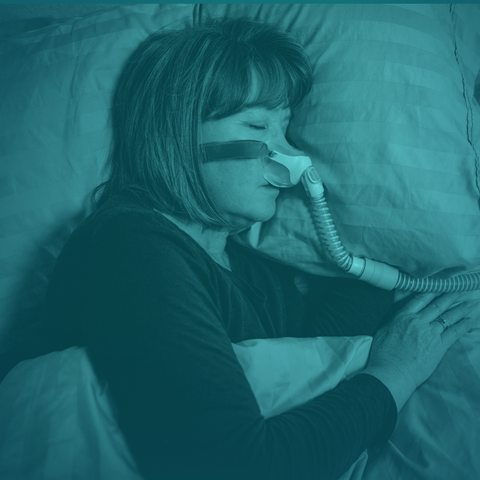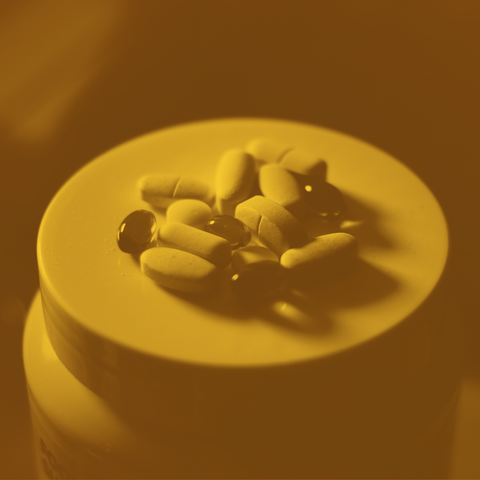
Do you love methylene blue? Well, here at Troscriptions, methylene blue is the best thing since sliced (gluten-free, dairy-free, soy-free, non-GMO, and no-bees-were-harmed to make this) bread.
In previous blogs, we’ve covered many methylene blue topics including its history, many potential uses (especially as a Health Optimization Nootropic), and we have implored you to never drink actual fish tank cleaner (please!).
But what we haven’t dialed in yet is dosing.
So, in this article that’s exactly what we will do.
We’ll discuss the why behind Troscriptions dosing and also take a deep dive into the potential dangers, drug interactions, and possible side effects, especially when taking higher doses over longer periods.
Are you ready? Let’s go!
Oh, wait! But first…
A quick (but detailed) refresher on the mechanisms and effects of methylene blue
Methylene blue is an electron (or redox) cycler. At doses up to 3 mg/kg, it acts both as an electron donor to the electron transport chain in your mitochondria (helping you make energy) and as an electron acceptor of free electrons from reactive oxygen species (i.e., works like an antioxidant as powerful or possibly even more powerful than glutathione and vitamin C).
There are very few compounds that cycle electrons as effectively as methylene blue. However, the dose is important and side effects could be possible if you are taking too much, especially for too long (more on this later).
In addition, the oral administration of methylene blue increases cytochrome oxidase (complex IV) function in your mitochondria which drives increased energy production and metabolic rate.
Methylene blue also increases energy production by increasing the supply of NAD+ and FAD+ and donating electrons directly to complex IV (just like oxygen) to be the final electron acceptor. At doses <3 mg/kg, methylene blue also increases the release of endogenous nitric oxide, leading to the dilation of blood vessels, and ensuring more oxygen-rich blood is available.
For those nerds amongst us who love the electron transport chain (we are guilty), it comes down to this: Methylene blue not only enhances energy production under normal conditions, but it also has the amazing ability to bypass ANY dysfunctional complex to help maintain energy production. This is a big deal and a major reason why methylene blue can reverse or compensate for mitochondrial damage.
And that’s not all!
Taking methylene blue orally changes the conformation of hemoglobin in RBCs to help it carry oxygen more efficiently, promotes oxygen release into tissues so it can be utilized more easily, helps clear senescent cells, increases mitochondrial biogenesis, and works as a monoamine oxidase inhibitor (MAO-I) which leads to increases in dopamine, norepinephrine, and serotonin.
Phew! Are you keeping up? This compound is doing a lot and has a large therapeutic range… from 4 to 210 mg (<0.5 to 3 mg/kg).
Even at doses >3 mg/kg, when methylene blue is no longer an electron cycler and becomes purely oxidative, there may be a role for it in cancer and sepsis.
But that’s a huge therapeutic range. How do you know what dose is best for you?
Dosing and proper use of methylene blue
The key point is to distinguish what kind of dosing helps acutely (i.e., for a disease or condition) vs. what dosing will help optimize health or a more chronic condition. And also to be aware of the significant dangers of taking too much methylene blue at high doses for long periods, including the risk of methemoglobinemia in susceptible individuals and other side effects.
Let’s chat about the risks of higher-dose methylene blue.
Methylene blue and the disruption of GI biofilms
One concern with higher-dose methylene blue, typically greater than 1 mg/kg body weight, is that it may disrupt natural and healthy gastrointestinal biofilms, leading to issues with your gut lining and gut microbiota.
Biofilms are a collective of one or more types of microorganisms that can grow on many different surfaces. They produce an extracellular polymeric substance (EPS), which gives the surface a film-like/sticky consistency. A fully functioning biofilm structure is comprised of microbial cells and EPS, has a defined architecture, and provides an optimal environment for the exchange of genetic material between cells of the same and different phyla, otherwise known as trans-kingdom interactions.
Microorganisms that form biofilms include bacteria, fungi, and protists. In the gut, biofilms naturally grow, both at the epithelial surface and in the lumen as mucin-attached and food particle-attached colonies. Communities of microbes that form biofilms are usually more resilient to stress and are well-known to keep surfaces like your mouth and gut healthy. This includes enhancing immune system function. They also function as a physical barrier to the intestinal lining.
There are, however, times when these biofilms can become pathologic, such as in dental plaques or with certain bacterial infections, like Bartonella. When this occurs, biofilms can protect pathogenic bacteria and can be difficult for the host defense system to identify. This is where methylene blue can be very effectively used at higher doses, especially when combined with other synergistic therapies, such as photodynamic therapy.
High doses may be dangerous due to methylene blue's half-life. Here’s why…
Methylene blue — whether IV, oral, or in troche form — is almost 100% bioavailable, meaning that almost all the methylene blue you take in gets into your bloodstream.
How long methylene blue stays in your body depends on its half-life. This is defined as the time it takes for one-half the amount of ingested methylene blue to leave your body.
The half-life of IV methylene blue is 24 hours.
The half-life of oral methylene blue is 4 to 6 hours (this half-life, of note, is a critical factor to consider when there are missed doses or when increasing the dose to twice or three times daily).
Let’s take the example of a 100 mg oral methylene blue dose with a half-life of 6 hours:
Imagine you take your dose at 8 am…
half-life #1: 50 mg left in your body at 2 pm (i.e., 6 hours later)
half-life #2: 25 mg left in your body at 8 pm (i.e., another 6 hours later)
half-life #3: 12.5 mg left in your body at 2 am
half-life #4: 6.25 mg left in your body at 8 am
This means that if you take 100 mg of methylene blue at 8 am, you'll still have 6.25 mg of methylene blue in your body 24 hours later.
Even if we assume that the methylene blue half-life is 4 hours, then there would be 3.125 mg of methylene blue left in your body at 8 am the next day.
Either way, 100 mg daily methylene blue taken daily will continue to build up in your system, and this buildup could lead to adverse effects, especially when the accumulative dose reaches 3 mg/kg or greater.
High doses of methylene blue and risk of gastric ulceration?
While higher doses of methylene blue may help treat some disease processes, it may cause a higher risk of gastric ulceration over the long term.
In addition, there has been some discussion about whether methylene blue requires gastric acid for activation (as an argument against using methylene blue buccal troches), but this is not the case. After all, IV methylene blue is 100% bioavailable and completely bypasses the GI system (including any gastric acid).
Using methylene blue with G6PD deficiency
Although rare, a higher dosage, definitely greater than 3 mg/kg and possibly >1 mg/kg if used IV, methylene blue may also cause hemolysis (the destruction of red blood cells) in those with G6PD deficiency, an inherited blood disorder. At lower doses and with oral formulations this would be rare, but caution is still advised.
Conclusion
At Troscriptions, we have two pure methylene blue products, Just Blue and Tro+ Blue.
Just Blue dosing was designed to leverage this magical blue compound for its energy-enhancing and antioxidant properties while at the same time minimizing the risks of potential GI biofilm disruption, methylene blue building up in the body, the potential for gastric ulceration, and other possible side effects.
Just Blue dosing also happens to be the dosing being studied in patients with neurocognitive conditions such as Alzheimer's disease (but we make no claims).
Tro+ Blue was designed for practitioners because at 50 mg per troche, this dosing is a very powerful anti-infective, anti-inflammatory, and mitochondrial rescue, but the risks described in this article are possible and should be heeded, especially with longer-term use of higher strength methylene blue.
Now, a few words of advice to leave you with on methylene blue quality…
Make sure your methylene blue company is going the extra mile to give you a pure product. Many on the market, even USP-designated products, may be contaminated with heavy metals. Industrial and chemical-grade methylene blue should be avoided at all costs.
At Troscriptions, our methylene blue is:
- USP grade
- Third-party tested by our manufacturer to ensure purity/potency
- Tested AGAIN for purity/potency with each troche batch we make
Does your methylene blue company do all this? We doubt it!
Plus, 4 doctors on the Tro Team + practitioners around the world use our products in clinical practice.
To Health, Optimized.
— Dr. Scott and the Troscriptions team






Comments (0)
There are no comments for this article. Be the first one to leave a message!